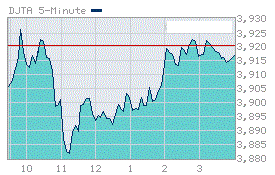The Dow Jones Transportation Average (DJTA) is the most widely recognized gauge of the transportation sector. It is also the oldest index used today, even older than its more famous brother, the Dow Jones Industrials (DJIA). The Transportation Average was the first stock index developed by Charles Dow in 1884. At inception, the index held only nine stocks (all railroads). In 1896 it was modified to include 20 �active� stocks, including 18 railroads. (As you can probably guess, automotive and airline stocks were not added to the index until much later.) The index is often referred to simply as the Dow Jones Transports.
The Dow Jones Transportation Average (also called the “Dow Jones Transports” DJTA) is a U.S. stock market index of the transportation sector, and is the most widely recognized gauge of the American transportation sector.[1] It is the oldest stock index still in use, even older than its better-known relative, the Dow Jones Industrial Average (DJIA).
The Dow Jones Industrial Average has chronicled more than 110 years of investing and has served as a marker through all of the major developments in modern history.
the Dow Jones Transportation Average is composed of 20 stocks that are chosen to represent the transportation industry. Like other Dow Jones Averages, it is a price-weighted index. This means that a firm’s weighting in the index is determined by its share price, not by its market capitalization.
Positives:
The DJTA has the longest track record of any index. It is a good proxy for tracking the general performance of U.S. transportation stocks.
Drawbacks:
Though it is the oldest index used today, few non-professional investors actually track the performance of the Dow Jones Transports. As the economy has become more technology and service based, this index has lost some of its prominence in financial discussion. As noted earlier, it is also a price-weighted index, and many investors question the interpretation of indices weighted in this fashion.
